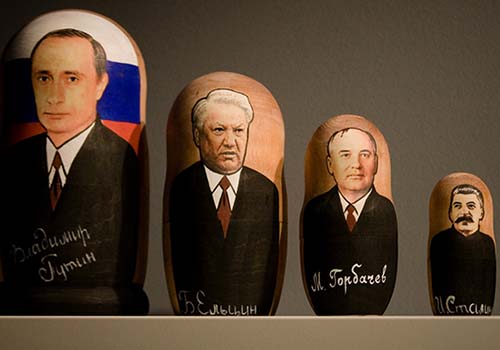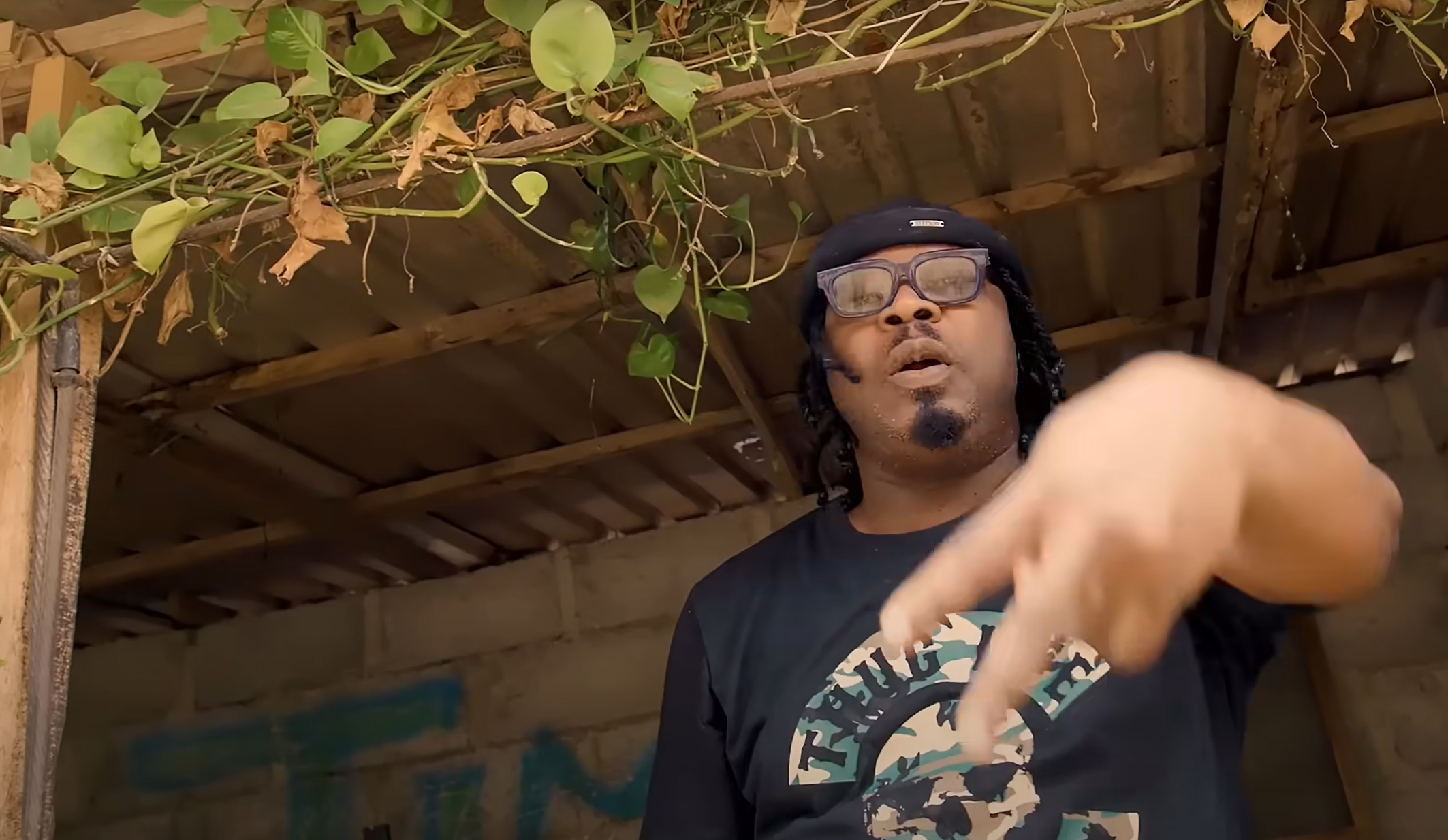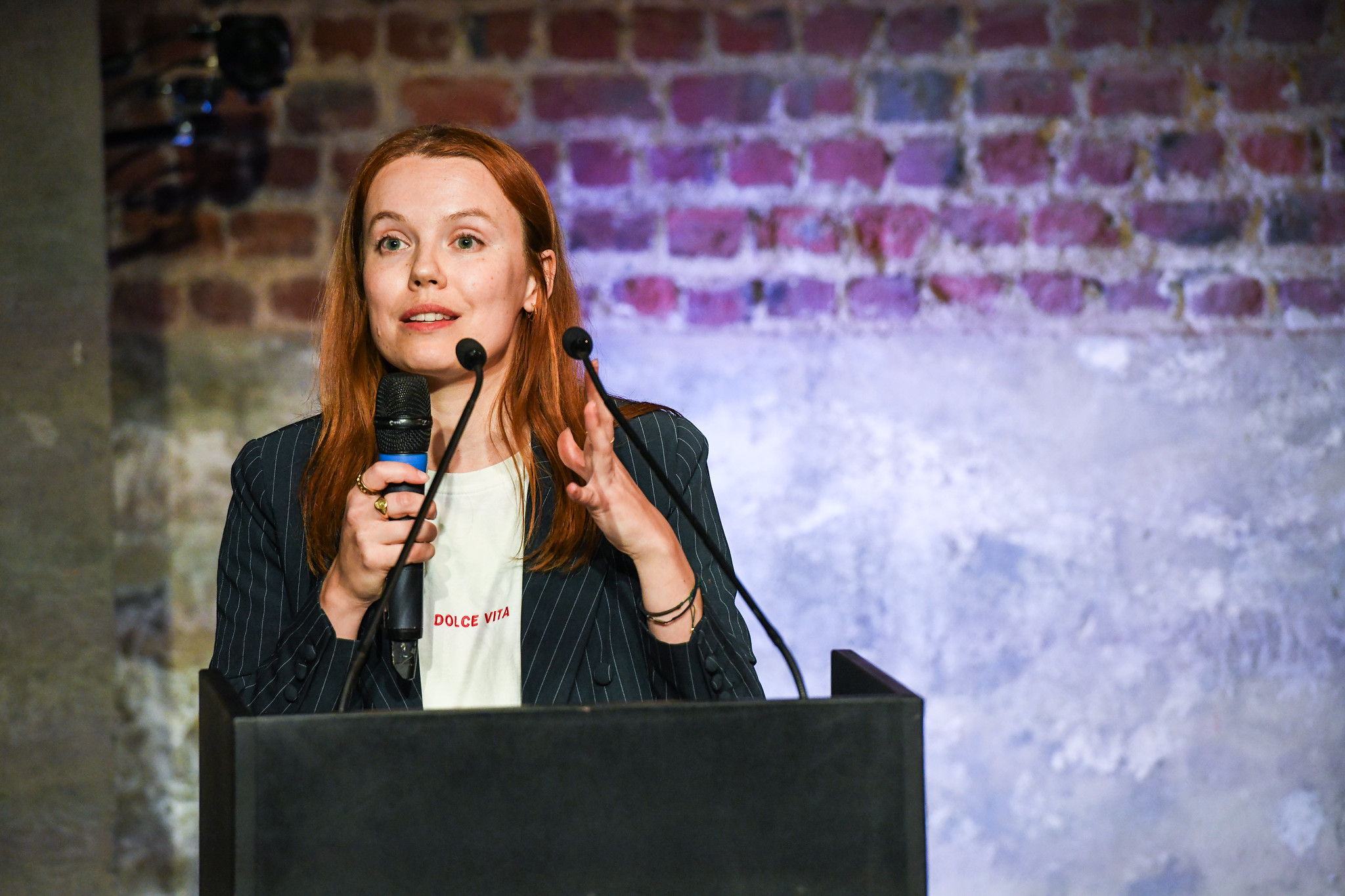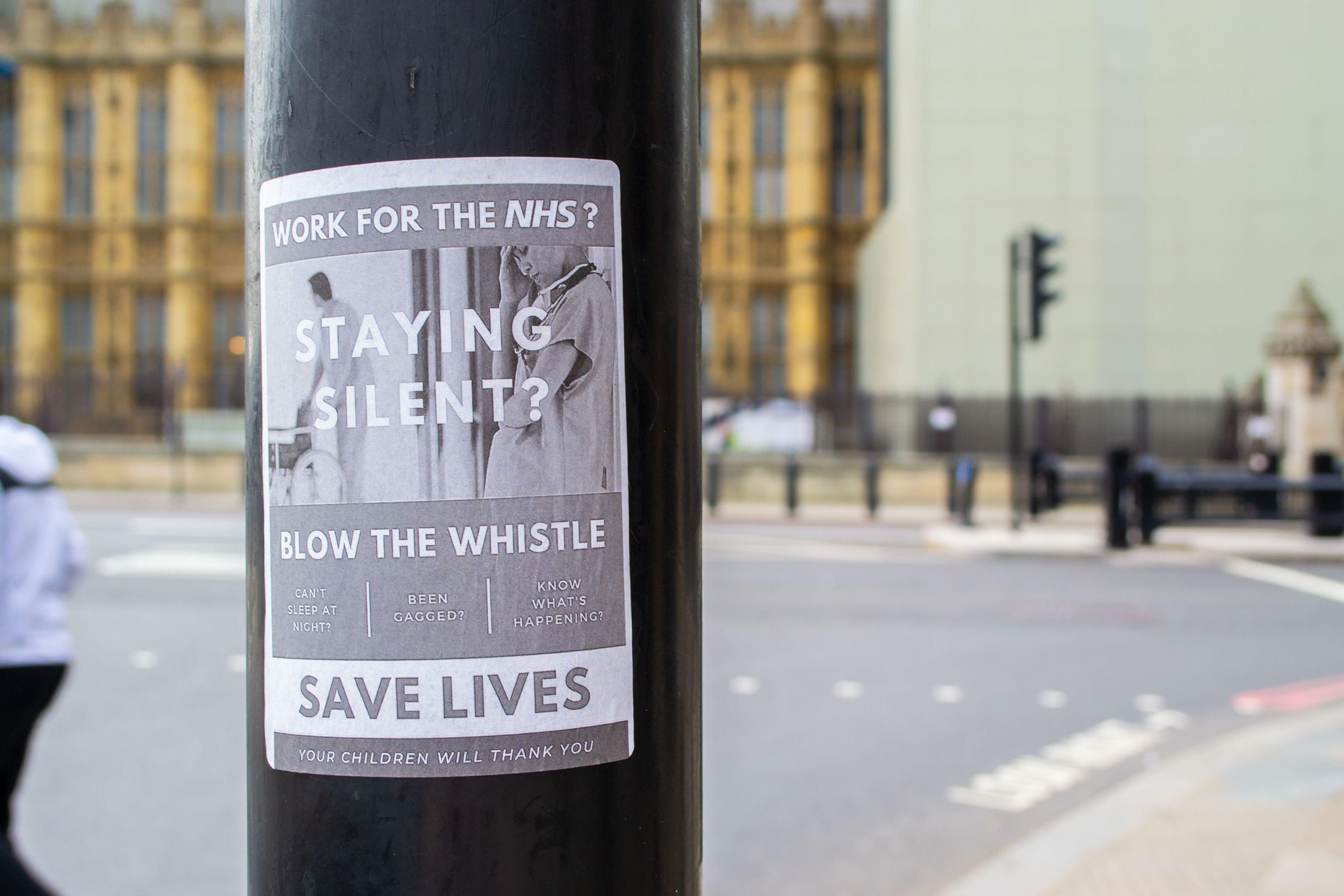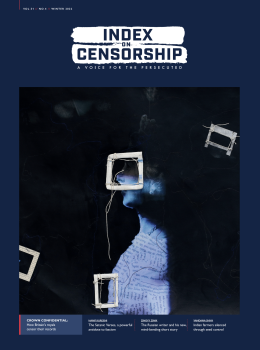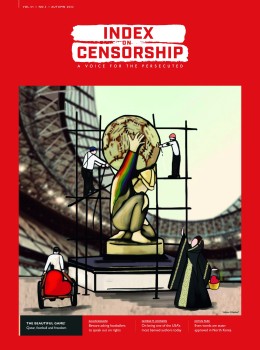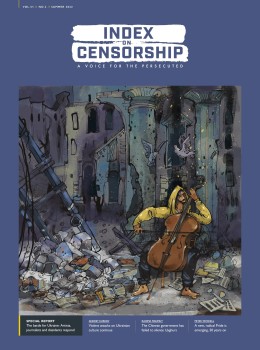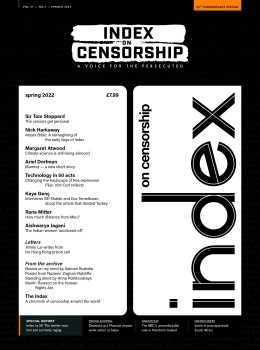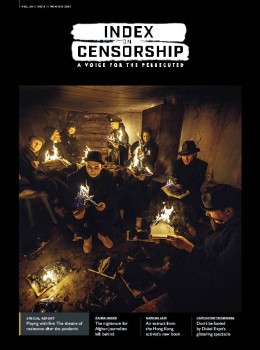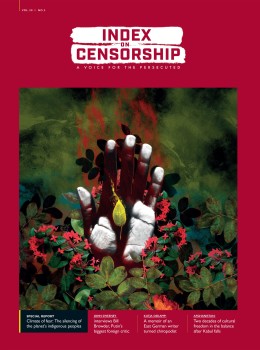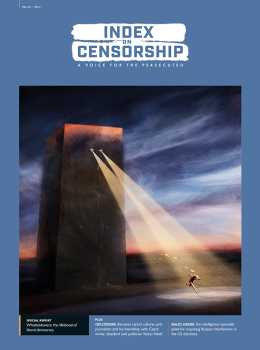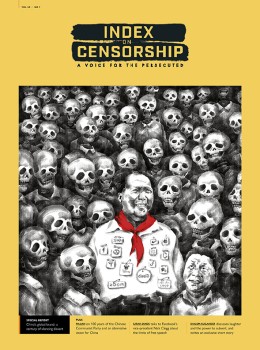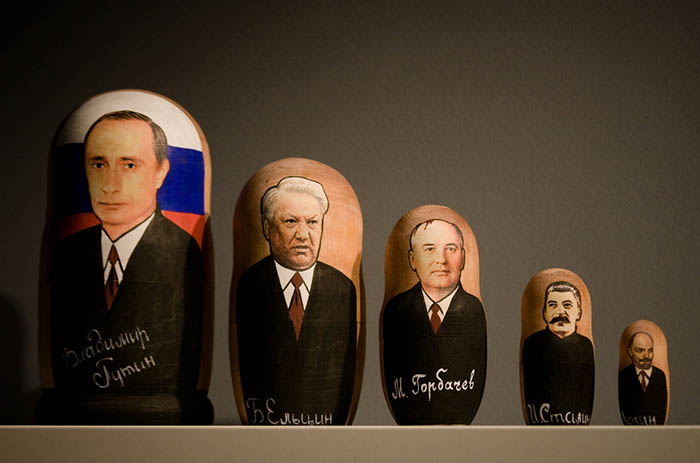
Credit: Amy Allcock / Flickr
The summer 2017 issue of Index on Censorship magazine explores how the 1917 Russian Revolution still affects freedom today, in Russia and throughout the world.
To mark the release of the issue, Index has compiled a reading list for people wishing to learn more about its legacy in the world today. This list includes works from Soviet Russia and post-Soviet Russia, including Russia under Putin today.
Soviet Russia
Alexander Solzhenitsyn, God keep me from going mad*
1972; vol 1, 2: pp.149-151
An excerpt of a longer poem written by Solzhenitsyn while in a labour camp in North Kazakhstan. The camp later became the inspiration for Solzhenitsyn’s novel A Day in the Life of Ivan Denisovich.
Alexander Glezer, Soviet “unofficial” art*
1975; vol 4, 4: pp. 35-40
Glezer was responsible for organising the now famous unofficial art exhibitions in Moscow in 1974. The first exhibition, on 15 September, was ‘”bulldozed” by police and KGB agents, and a number of artists who tried to exhibit their work were arrested. Two weeks later, however, an open-air exhibition did take place, after the authorities gave permission, and some 10,000 people turned up to see paintings and sculptures by modern Soviet artists who did not enjoy official favour.
Michael Glenny, Orwell’s 1984 through Soviet eyes*
1984; vol 13, 4: pp. 15-17
This article examines Soviet interpretations of 1984, including the assertion that George Orwell was actually critiquing capitalism, not the USSR, with his novel.
Natalya Rubinstein, A people’s artist: Vladimir Vysotsky
1986; vol 15, 7: pp. 20-23
This is an article about the musician Vladimir Vysotsky, once called “the most idolised figure in the Soviet Union”. His songs were circulated on homemade tapes, though never officially recorded until after his death.
Irena Maryniak, The sad and unheroic story of the Soviet soldier’s life
1989; vol 18, 10: pp. 10-13
An Estonian reporter’s exposé prompts a call from the army. Madis Jurgen, who brought to light the dark side of the Soviet armed forces, left Tallinn on Friday 13 October, bound for New York and Toronto, from where he decided to await events.
Post-Soviet Russia
Svetlana Aleksiyevich, A Prayer for Chernobyl
1998; vol 27, 1: pp. 120-128
Early on 26 April 1986, a series of explosions destroyed the nuclear reactor and building of the fourth power generator unit of Chernobyl atomic power station. These extracts are not about the Chernobyl disaster but about a world of Chernobyl of which we know almost nothing. They are the unwritten history.
Viktor Shenderovich, Tales from Hoffman*
2008; vol 37, 1: pp. 49-57
As they say, still waters run deep. On 8 February 2000, an announcement was made in the St Petersburg Gazette by members of the St Petersburg State University Initiative Group. Shortly beforehand they had, in competition with others, nominated Putin as a presidential candidate and now wished to demonstrate their enthusiasm for their former pupil. What they published was a denunciation.
Fatima Tlisova, Nothing personal
2008; vol 37, 1: pp. 36-46
Fatima Tlisova was brutally beaten for her uncompromising journalism on the North Caucasus. Here, she recounts the tactics used to intimidate her.
Anna Politkovskaya, The cadet affair: the disappeared
2010; vol. 39, 4: pp. 209-210.
An article on the disappeared in Chechnya, who officially number about 1,000, but unofficially are almost 2,000. They disappeared throughout the war. The author, Anna Politkovskaya, was murdered in her Moscow apartment in a contract killing in 2006.
Nick Sturdee, Russia’s Robin Hood*
2011; vol 40, 3: pp. 89-102
Widespread frustration with the establishment has fostered a brand of political street art that is taking the country by storm.
Ali Kamalov, Murder in Dagestan
2012; vol 41, 2: 31-37
Ali Kamalov, the head of Dagestan’s journalists’ union fears for the future of press freedom following the murder of the country’s most prominent editor. On 15 December 2011, Hadjimurad Kamalov was murdered in Makhachkala, the seaboard capital of Dagestan.
Maxim Efimov, Religion and power in Russia
2012; vol 41, 4
Although the Russian constitution enshrines freedom of expression, the authorities routinely clamp down on anybody who treasures this fundamental right. State officials, judges, deputies, prosecutors and police officers serve the ruling regime and control society, rather than defend the constitution or protect human rights.
Elena Vlasenko, From perestroika to persecution
2013; vol 42, 2: pp. 74-76
Elena Vlasenko covers wavering hopes for an open Russia, and the evolution of repressive legislation, state censorship and journalists under threat.
Helen Womack, Making waves
2014; vol 43, 3: pp. 39-41
Helen Womack interviews the founder of the last free radio station in Putin’s Russia. These men are not dissidents, just journalists dedicated to professional principles of objectivity and balance. But in Putin’s Russia, where almost all the media spout state propaganda, that position looks like radical nonconformity, and it seems a wonder that Echo survives.
Andrei Aliaksandrau, Brave new war*
2014; vol 43, 4: 56-60
In the winter 2014 issue of Index on Censorship magazine, Andrei Aliaksandrau investigates the new information war between Russia and Ukraine as he travels across the latter country.
Andrei Aliaksandrau, We lost journalism in Russia
2015; vol 44, 3: pp. 32-35
Andrei Aliaksandrau examines the evolution of censorship in Russia, from Soviet institutions to today’s blend of influence and pressure, including the assassination of journalists.
Andrey Arkhangelsky, Murder in Moscow: Anna’s legacy*
2016; vol. 45, 3: pp. 69-74.
Andrey Arkhangelsky explores Russian journalism a decade on from Anna Politkovskaya’s murder and argues that the press still struggles to offer readers the full picture.
*Articles which are free to read on Sage. All other articles are available via Sage in most university libraries. To find out more about subscribing to the magazine in print or digitally, click here.

